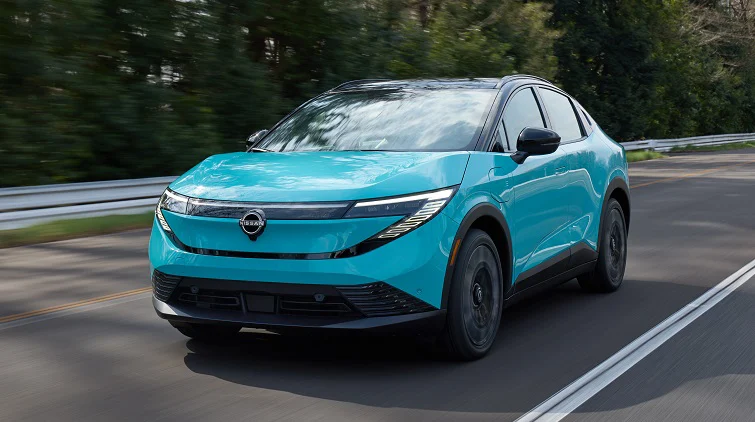Nissan has launched its third-generation electric Leaf. The next-generation Leaf features an increased range and enhanced charging speed, and is built on the latest three-in-one EV powertrain.
Nissan president and CEO Ivan Espinosa said, “The Nissan Leaf reflects our commitment to innovation and sustainability. The original Leaf helped popularize electric vehicles, and this third generation invites consumers to embrace an EV lifestyle with a range of compelling features. It plays an important role in our Re:Nissan action plan, offering impressive performance, stylish design and advanced technology.”
Three-in-one EV powertrain
The Leaf is built on the latest three-in-one EV powertrain with an integrated motor, inverter and reducer, which is 10% smaller than its predecessor, and features Nissan’s unique motor control, which aims to enhance refinement.
The latest motor, paired with the latest high-rigidity motor-mount bracket, supports a 75% reduction in motor vibration compared with the outgoing model.
Battery options
The latest-generation electric vehicle is available with two liquid-cooled lithium-ion battery options, both of which offer thermal conditioning functionality.
Select models are powered by batteries with 52kWh of usable capacity, supporting an output of 130kW and 345Nm of torque. Larger 75kWh batteries are also available, providing 160kW and 355Nm of torque.
An enhanced thermal recovery and management system harvests heat created by the onboard charger (OBC) to warm up the battery, increasing its regeneration potential in cold weather.
Additionally, on applicable grades a new intelligent navigation-linked thermal conditioning function optimizes battery cooling based on the selected drive route.
In the US, select grades featuring the 75kWh battery are estimated to deliver a maximum range of up to 303 miles (487km). Customers in the US and Canada also benefit from the convenience of a North American Charging Standard (NACS) connector, allowing them to charge at Tesla Supercharger locations.
When their vehicles are connected to a fast charger, owners can replenish 10-80% of the charge in as little as 35 minutes.
Vehicle-to-home/vehicle-to-grid
In Japan, the Leaf will continue its ability to deliver vehicle-to-home (V2H) functionality, enabling it to supply electricity back to a home or receive solar-generated energy when connected to a home energy management system. This allows users to power household appliances or charge devices using the energy stored in the vehicle’s battery.
Specifically for Europe, the Leaf is vehicle-to-grid (V2G) compatible, meaning it will be compatible with future technologies that will enable stored energy to be sent back to the power grid.


